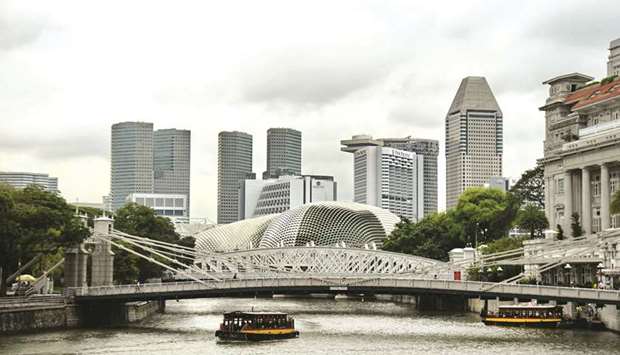The export-reliant city state was already facing a high bar for growth this year following a boom in electronics demand in 2017 that fuelled global trade.
After last year’s expansion of 3.6%, growth is set to moderate to a range of 2.5% to 3.5% in 2018, a forecast that the government retained yesterday.
External risks are now building as regional supply chains come under strain because of a US-China trade war, oil prices remain elevated and the dollar strengthens.
While the direct effect of higher US tariffs on Singapore’s exports was small, the trade conflicts could hurt global trade flows and growth if they escalate, the trade ministry said.
“There is a risk of a further escalation of the ongoing trade conflicts that could lead to a vicious cycle of tit-for-tat measures between the US and other major economies,” the ministry said.“Should this happen, there could be a sharp fall in global business and consumer confidence, and in turn, investment and consumption spending.”
Another external risk is rising US interest rates and the knock-on effect on emerging-market economies in the region if the Federal Reserve tightens policy faster than expected.
The ministry said if this occurs, there could be a pullback in investment and consumption, which could hurt growth in the region.
Domestically, the government expects a moderation in growth in the second half, with exports and manufacturing continuing to underpin the economy’s expansion, although at more subdued levels.
The construction industry, which was weighed down last quarter by public sector projects, will remain lacklustre after additional property curbs announced last month crimps activity.
The growth slowdown was anticipated and inflation pressures are seen persisting, Jacqueline Loh, deputy managing director at the Monetary Authority of Singapore, told reporters yesterday.
The MAS tightened policy in April and is scheduled to make its next decision in October.
“Given the list of worries, while my own forecast had been for another slight tightening, clearly risk has moved toward the other side” for the central bank’s October decision, said Edward Lee, chief economist for South and Southeast Asia at Standard Chartered Plc in Singapore.

